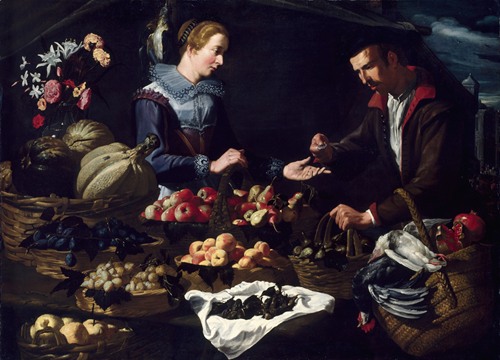

Giacomo Legi was a Baroque painter of Flemish descent who was active principally in northern Italy during the first half of the 17th century. Here he was one of the leading painters of still lifes and market and pantry scenes.
Little is known about Legi’s early life. His original name is not known with certainty. It is believed that his Italian name is derived from the French word Liège which may refer to the city Liège or the Prince-Bishopric of Liège (Liegi in Italian), in present-day Belgium, where he may have been born. Antwerp has also been suggested as a possible place of birth.
Legi moved to Genoa to work as an apprentice in the large workshop of Jan Roos, a Flemish painter who had made a name for himself in Genoa and had married a local woman. Jan Roos specialized in still lifes and market scenes and may have been Legi's brother-in-law. Genoa was at the time an attractive destination for artists since the competition between artists there was less intense than in the leading cultural centres Rome, Florence and Venice, while Genoa was a thriving port city where a large number of potential customers and collectors lived. There was a large colony of Flemish artists who resided in or passed through the city and relied on the network of established Flemish artists and traders to find patrons and commissions.
Struck by an illness he moved for treatment to Milan, where he died some time between 1640 and 1645.

